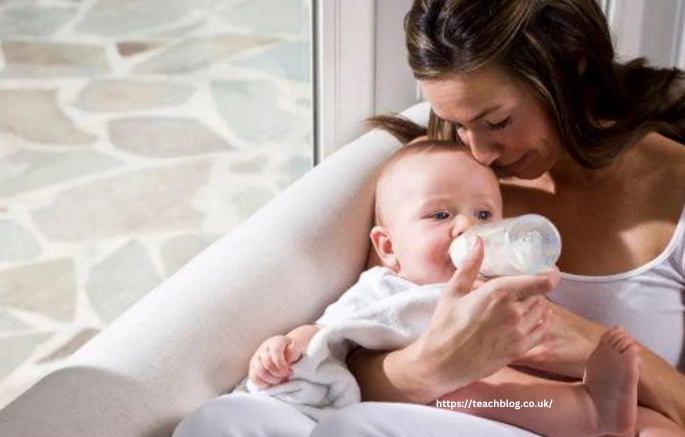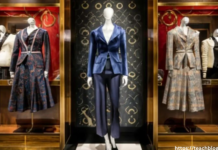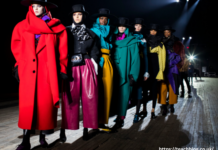The candy industry has always thrived on innovation, introducing products that capture the imagination of both children and adults alike. Among the many confectionery items that have made a significant impact is the “Baby Bottle Pop.” This unique candy, with its distinctive baby bottle shape and interactive eating experience, has become a nostalgic treat for many who grew up in the late 1990s and early 2000s. In this article, we delve into the history, marketing genius, and cultural impact of Baby Bottle Pop, a candy that continues to sweeten our lives.
Table of Contents
The Origins of Baby Bottle Pop
Baby Bottle Pop was introduced to the candy market in 1998 by the Topps Company, a brand renowned for its baseball cards and confectionery products. Topps wanted to create a candy that would stand out from the competition, something that would be not just tasty but also fun to eat. The result was a candy that looked like a baby bottle, with a sweet powder inside and a lollipop top that could be dipped into the powder, offering a playful and interactive eating experience.
The candy quickly became a hit, particularly among children. The baby bottle shape was both a novelty and a marketing triumph, as it appealed to kids’ natural inclination towards playful and colorful items. The interactive nature of Baby Bottle Pop, where the user could dip the lollipop into the flavored powder, made it more than just a candy—it was an experience.

The Marketing Strategy: A Sweet Success
One of the most significant factors contributing to the success of Baby Bottle Pop was its clever marketing strategy. The brand’s advertising was primarily aimed at children, with catchy jingles and colorful commercials that were hard to forget. The famous “Baby Bottle Pop” jingle, with its simple yet infectious tune, became synonymous with the candy itself. The jingle played on the idea of the candy being fun and interactive, encouraging kids to “lick it, dip it, and shake it.”
Topps also tapped into the growing trend of interactive toys and games, recognizing that children were increasingly drawn to products that allowed them to engage with them actively. By positioning Baby Bottle Pop as not just a candy but an interactive treat, Topps successfully differentiated it from other products in the market.
The Evolution of Flavors and Packaging
Initially, Baby Bottle Pop was available in a few simple flavors like strawberry, cherry, and watermelon. However, as the candy gained popularity, Topps expanded its flavor lineup to include a wide variety of options. Sour flavors were introduced to cater to the growing trend for tangy and tart candies. Additionally, special edition flavors and limited-time offerings kept the product fresh and exciting for consumers.
Packaging also played a crucial role in the candy’s appeal. The original baby bottle design was not only functional but also visually striking. The bottle’s vibrant colors and the clear cap allowed kids to see the candy inside, adding to its allure. Over the years, the packaging has seen some changes, but the iconic baby bottle shape has remained a constant, reinforcing the brand’s identity.
Cultural Impact and Nostalgia
Baby Bottle Pop has left an indelible mark on popular culture, particularly among those who grew up during its heyday. For many millennials, the candy is a symbol of childhood, evoking memories of simpler times. The product’s popularity has even led to a resurgence in recent years, as nostalgic adults seek out the candy to relive their youth.
The brand has also maintained its relevance by adapting to changing consumer preferences. In 2017, Baby Bottle Pop introduced a new product line called “Candy Popping Powder,” which added a fizzy, popping sensation to the classic formula. This innovation demonstrated the brand’s ability to evolve while staying true to its roots.
Moreover, Baby Bottle Pop has remained a popular choice for Halloween treats, birthday party favors, and other special occasions. Its unique design and interactive nature make it a fun and memorable gift for kids, ensuring its continued presence in the candy aisle.
The Digital Age: Baby Bottle Pop’s Online Presence
In the age of social media and digital marketing, Baby Bottle Pop has successfully transitioned to online platforms. The brand maintains an active presence on social media, where it engages with fans, shares promotional content, and runs contests. This online presence has allowed Baby Bottle Pop to connect with a new generation of consumers, ensuring that the brand remains relevant in an increasingly digital world.
Additionally, the candy has been featured in various online content, including nostalgic listicles, YouTube reviews, and social media posts. These digital mentions have further cemented Baby Bottle Pop’s status as a beloved childhood treat, introducing it to those who may not have experienced it during its initial run.
Conclusion: A Timeless Treat
Baby Bottle Pop is more than just a candy; it is a cultural icon that has stood the test of time. From its innovative design and interactive eating experience to its catchy marketing and enduring popularity, Baby Bottle Pop has secured its place in the pantheon of great confectionery products. Whether you’re a millennial looking to recapture the flavors of your youth or a child discovering the candy for the first time, Baby Bottle Pop continues to offer a sweet and playful escape from the ordinary. As the candy industry evolves, Baby Bottle Pop remains a testament to the power of creativity and nostalgia in creating products that resonate across generations.



















